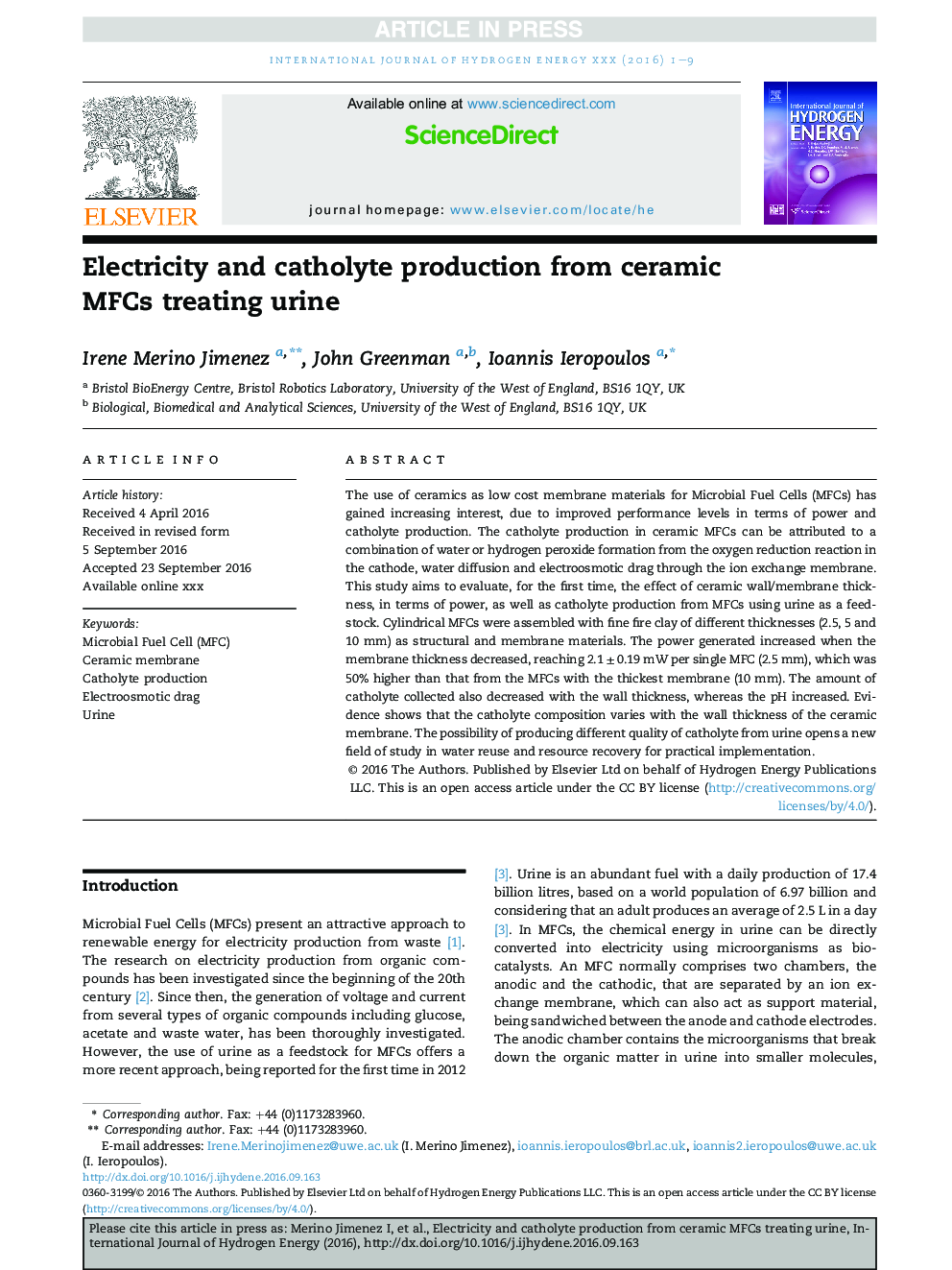| Article ID | Journal | Published Year | Pages | File Type |
|---|---|---|---|---|
| 5146991 | International Journal of Hydrogen Energy | 2017 | 9 Pages |
Abstract
The use of ceramics as low cost membrane materials for Microbial Fuel Cells (MFCs) has gained increasing interest, due to improved performance levels in terms of power and catholyte production. The catholyte production in ceramic MFCs can be attributed to a combination of water or hydrogen peroxide formation from the oxygen reduction reaction in the cathode, water diffusion and electroosmotic drag through the ion exchange membrane. This study aims to evaluate, for the first time, the effect of ceramic wall/membrane thickness, in terms of power, as well as catholyte production from MFCs using urine as a feedstock. Cylindrical MFCs were assembled with fine fire clay of different thicknesses (2.5, 5 and 10 mm) as structural and membrane materials. The power generated increased when the membrane thickness decreased, reaching 2.1 ± 0.19 mW per single MFC (2.5 mm), which was 50% higher than that from the MFCs with the thickest membrane (10 mm). The amount of catholyte collected also decreased with the wall thickness, whereas the pH increased. Evidence shows that the catholyte composition varies with the wall thickness of the ceramic membrane. The possibility of producing different quality of catholyte from urine opens a new field of study in water reuse and resource recovery for practical implementation.
Related Topics
Physical Sciences and Engineering
Chemistry
Electrochemistry
Authors
Irene Merino Jimenez, John Greenman, Ioannis Ieropoulos,
